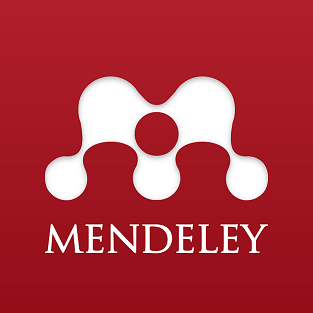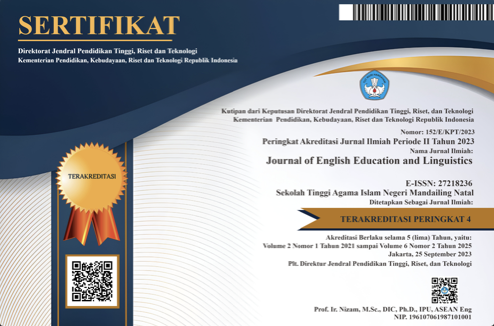Folk Healing Narratives: A Grounded Theory
DOI:
https://doi.org/10.56874/jeel.v2i1.407Abstract
This study collected, transcribed, translated, and categorized the folk healing narratives from Magarao, Camarines Sur to reveal the shared meanings and derived a theory about them. The researcher used descriptive method to describe the existing folk healing narratives and contact method was used in gathering the data then followed the process of Grounded Theory Method. The collected narratives from the nine (9) folk healers were classified into four (4) categories namely; pagbulong sa paagi kan gabay (healing through the help of supernatural being), pagbulong sa paagi kan ritwal (healing through rituals), pagbulong sa paagi kan pagsanib (healing through possession), and pagbulong sa paagi kan namanang kaaraman (healing through acquired knowledge). From the categories of folk healing narratives, the researcher extracted the shared meanings that resulted to the four (4) stages of folk healing: pag-apod (calling), pag-isi (knowing), pag-umay (healing), and pag-arang (offering). This study concluded that for folk healers to perform folk healing, they combine their skills and gift of healing that was endowed to them by the Supreme Being. The extracted shared meanings reflect how people who adhere to folk healing view the world; this is because of their similarities in experiences. Shared meanings which are present in these modern times can be traced back from the practices and beliefs of the ancient Bikolanos reflected in the Bikol literature. This study recommends the future researchers to conduct similar studies specifically in the shared meanings and practices in the other aspects of the society
References
A. A. Amador. (2011). “Urban Legends in Selected Barangays in Legazpi City”. . BU Graduate School, Albay.
Adi. (2011).he Importance of Folklore in Nation’s Culture”. (2011). Retrieved on March 3, 2017. https://faithandheritage.com/2011/07/the-importance-of-folklore-in-a-nations-culture/
B. G. Glaser and A. Strauss. (2006). “The Discovery of Grounded Theory: Strategies for Qualitative Research”. (Reprinted in 2006) New Brunswick, USA and London, UK, Aldine Transaction.
G. Stuart Jr.(2014) “Philippine Alternative Medicine; The Healers”.. Retrieved on November 4, 2016 from http://www.stuartxchange.com/Albularyo.html
J. B. Mansueto, et. al.(2015) “Folk Gealing Practices of Siquijor Island”.. Retrieved on October 6, 2016. http://siquijorterminalreport2015
M. J. Manzanan, OSB.(2014).Women, Religion and Spirituality in Asia. . Pasig City, Manila; Anvil Publishing House Inc.
M. S. Arriola.(2011). Spirituality Among Bikolanos: A Perspectives in Contemporary Practices. . A Published Study, University of the Philippines- Diliman
M.P. Paderan.(2016).Narratives of Folk Healing in Bato. . A Published Study, University of Saint Anthony. Iriga City, Philippines
Merriam Webster Dictionary. Definition of Faith Healing. Retrieved on February 11, 2017. http://www.merriam-webster.com
N. J. Portugal. (2009)“The Women Folk Healers of Albay”. An Undergraduate Study, BU CAS, Daraga, Albay.
R. Lorenzo. (2014) “Filipino-Traditional Healing”.. Retrieved on November 5, 2016. http://www.thepinoywarrior.com/2012/09/filipino-traditional-healing.html
S. Gilbas. (2015) “The Language of Legends; Indigenous Instructional Materials”. A Published Study, Sorsogon State College, Sorsogon City. (2015). retrieved on October 18, 2016. www.LibraryAsia2015.com
S. Rushdie. (1948) “Quotations from Salman Rushdie”. Retrieved on January 27, 2017. http://www.poemhunter.com
T. Meder. et. al.(2012) “Classification of Folk Narratives Genre”.. Retrieved on December 5, 2016. http://www.researchgate.net
Downloads
Published
Issue
Section
License
All articles published in the Journal of English Education and Linguistics are licensed under a Creative Commons Attribution-ShareAlike 4.0 International (CC BY-SA) license. This means anyone is free to copy, transform, or redistribute articles for any lawful purpose in any medium, provided they give appropriate attribution to the original author(s) and Journal of English Education and Linguistics, link to the license, indicate if changes were made, and redistribute any derivative work under the same license.
Copyright on articles is retained by the respective author(s) without restrictions. A non-exclusive license is granted to the Journal of English Education and Linguistics to publish the article and identify itself as its original publisher, along with the commercial right to include the article in a hardcopy issue for sale to libraries and individuals.
Although the conditions of the Creative Commons Attribution-ShareAlike 4.0 International (CC BY-SA) license do not apply to authors (as the copyright holder of your article, you have no restrictions on your rights), by submitting to the Journal of English Education and Linguistics, authors recognize the rights of readers and must grant any third party the right to use their articles to the extent provided by the license.

This work is licensed under a Creative Commons Attribution-ShareAlike 4.0 International License.








